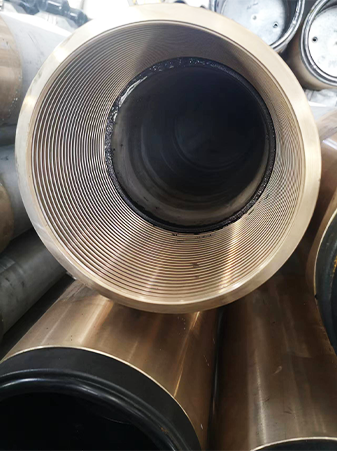- Afrikaans
- Albanian
- Amharic
- Arabic
- Armenian
- Azerbaijani
- Basque
- Belarusian
- Bengali
- Bosnian
- Bulgarian
- Catalan
- Cebuano
- Corsican
- Croatian
- Czech
- Danish
- Dutch
- English
- Esperanto
- Estonian
- Finnish
- French
- Frisian
- Galician
- Georgian
- German
- Greek
- Gujarati
- Haitian Creole
- hausa
- hawaiian
- Hebrew
- Hindi
- Miao
- Hungarian
- Icelandic
- igbo
- Indonesian
- irish
- Italian
- Japanese
- Javanese
- Kannada
- kazakh
- Khmer
- Rwandese
- Korean
- Kurdish
- Kyrgyz
- Lao
- Latin
- Latvian
- Lithuanian
- Luxembourgish
- Macedonian
- Malgashi
- Malay
- Malayalam
- Maltese
- Maori
- Marathi
- Mongolian
- Myanmar
- Nepali
- Norwegian
- Norwegian
- Occitan
- Pashto
- Persian
- Polish
- Portuguese
- Punjabi
- Romanian
- Russian
- Samoan
- Scottish Gaelic
- Serbian
- Sesotho
- Shona
- Sindhi
- Sinhala
- Slovak
- Slovenian
- Somali
- Spanish
- Sundanese
- Swahili
- Swedish
- Tagalog
- Tajik
- Tamil
- Tatar
- Telugu
- Thai
- Turkish
- Turkmen
- Ukrainian
- Urdu
- Uighur
- Uzbek
- Vietnamese
- Welsh
- Bantu
- Yiddish
- Yoruba
- Zulu
api 5ct coupling
Understanding API 5CT Coupling A Key Element in Oil and Gas Operations
The oil and gas industry relies heavily on robust and reliable equipment to maintain safe and efficient operations. Among the critical components used in drilling and production are pipe couplings, specifically those defined by API 5CT standards. API 5CT is a specification developed by the American Petroleum Institute (API) that outlines the requirements for seamless and welded steel casing and tubing for use in petroleum and natural gas industries. This article delves into the importance of API 5CT couplings and their roles in ensuring operational integrity and safety.
What is API 5CT?
API 5CT specifies the technical delivery conditions for various grades of casing and tubing used in the well construction and production phases. The standard is aimed at ensuring compatibility and standardization among manufacturers and operators in the oil and gas supply chain. The API 5CT standard divides casing and tubing into various grades, with each grade having specific properties suitable for different geological conditions and pressures encountered in oil and gas extraction.
The Role of Couplings
Couplings serve as essential connectors in the pipeline systems. They are used to join two sections of pipe, providing a secure and leak-proof seal under high pressures and extreme conditions. Specifically, API 5CT couplings are designed to meet the stringent requirements set forth in the API specifications, ensuring they can withstand the stresses and strains of drilling operations.
Types of API 5CT Couplings
API 5CT standards categorize couplings based on the type of pipe connections they are designed for, including
1. Threaded Couplings These are common in the oil and gas industry, featuring external threads on one end and internal threads on the other. They provide a tight seal and allow for straightforward assembly and disassembly of pipes.
2. Welded Couplings These couplings involve welding pipe sections together, creating a strong, permanent joint without the need for threading. Welded couplings are particularly useful in high-pressure applications where mechanical integrity is crucial.
api 5ct coupling

3. Integral Couplings These are manufactured as a single piece with the pipe, providing a higher strength joint without the weaknesses associated with threaded connections. Integral couplings are typically used in high-performance applications where reliability is paramount.
Benefits of API 5CT Couplings
The use of API 5CT couplings comes with several advantages that enhance operational efficiency
1. Standardization API 5CT establishes a uniform specification that manufacturers must adhere to, ensuring that the couplings provide consistent quality and performance across the board.
2. Durability and Strength Designed to withstand high pressures and challenging environmental conditions, API 5CT couplings are built to last, minimizing the risk of failures and leaks.
3. Compatibility Since API 5CT is widely accepted, couplings meeting this standard are compatible with various well construction and production equipment, making it easier for operators to source and integrate components.
4. Safety The stringent testing and quality assurance processes associated with API 5CT standards help prevent accidents related to pipe failures, enhancing the safety of drilling operations.
Conclusion
In conclusion, API 5CT couplings play a crucial role in the oil and gas industry, ensuring that pipe joints are secure and capable of withstanding the harsh conditions encountered in well drilling and production. By adhering to these standards, manufacturers provide operators with the confidence that their pipeline systems will perform reliably and safely. As the industry continues to evolve with new technologies and exploration methods, the importance of standardized components like API 5CT couplings will remain paramount, underlining the need for continuous adherence to regulations and best practices in oil and gas operations. The integrity of these systems not only ensures operational efficiency but also safeguards the environment and the communities surrounding these vital energy resources.
-
Tubing Pup Joints: Essential Components for Oil and Gas OperationsNewsJul.10,2025
-
Pup Joints: Essential Components for Reliable Drilling OperationsNewsJul.10,2025
-
Pipe Couplings: Connecting Your World EfficientlyNewsJul.10,2025
-
Mastering Oilfield Operations with Quality Tubing and CasingNewsJul.10,2025
-
High-Quality Casing Couplings for Every NeedNewsJul.10,2025
-
Boost Your Drilling Efficiency with Premium Crossover Tools & Seating NipplesNewsJul.10,2025







